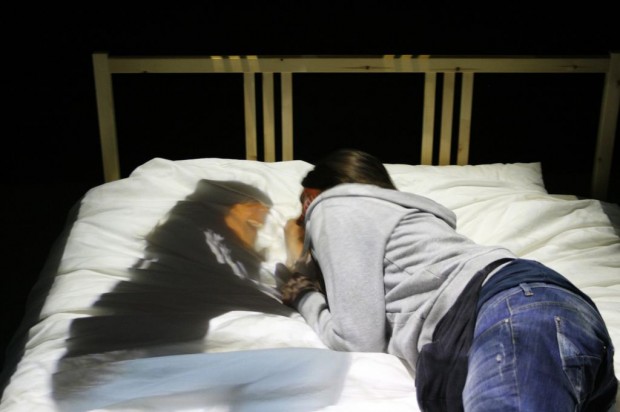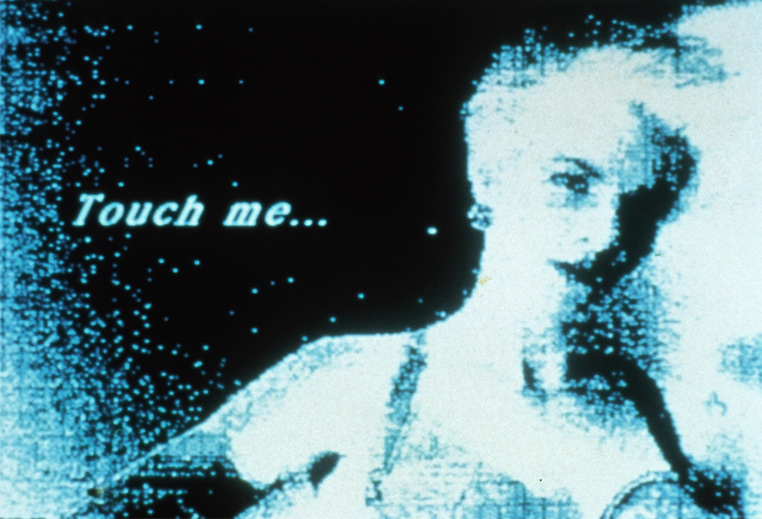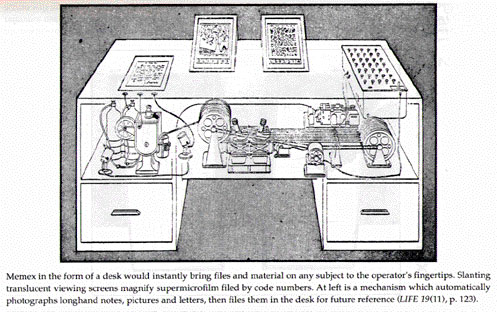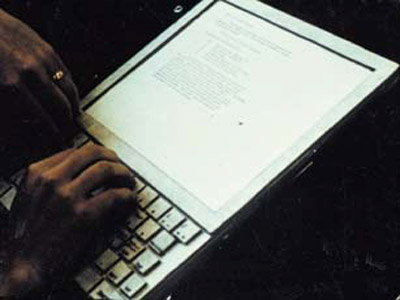Annie Abrahams was born in the Netherlands in 1954 and has lived in France since 1985. She gained a Doctorate in biology and a graduate in fine arts. She is a performance artist based on internet, networked platform. She explores the possibilities of communication and relationships mediated by machine. She creates the networked performances collaborating and communicating with other artists at a distance using the webcam interface.
The Big Kiss
The Big Kiss is a performance installation present in 10th October 2008, from 7:00 to 10:00 pm in Brooklyn, New York. Annie Abrahams performed using the webcam network to meet and kiss on the divided screen.
“What’s contact in a machine mediated world? What’s the power of the image? How does it feel to kiss without touching? Does the act change because we see it? What does it mean to construct an image with your tongue? And is there still desire? Does the act provoke it? What’s contact in a machine mediated world?”
-Annie Abrahams, The Big Kiss, http://www.bram.org/toucher/TBK.html
Communication and Intimacy mediated by machine
She experiments human behavior in digital era. We communicate with others virtually and gain a physical safety. We put our bodies in our room, make a relationship or escape from it easily with on and off button. In this era, Could we communicate and make a intimate relationship without seeing each other? What kind of communication is it? or what kind of intimacy is it? Could we replace the word “relationship” with the word “network”?
We never reach out to complete communication both in physical and virtual world. There is alway misunderstanding, misreading and disconnection which makes isolation and loneliness. The thing is that we always fail to communicate correctly. With all this technological developments, though, communication was fated to fail. In my opinion, this misunderstanding and disconnection create chaos. And chaos is tool for new possibility. Annie Abrahams accepts this chaos and make it performance art. By doing so, she suggests a different form of intimacy that is in between loneliness and togetherness just like what human behave behind the on-off machine.
“The projects situate a condition of lonely togetherness, of life constructing a commonality, of being together and sharing this condition of co-responsibility, of scripted auto-organisation.”
-A question of control?, Trapped to Reveal-On webcam mediated communication and collaboration, Annie Abrahams.
“My thinking is more about communication: about, on the one hand, the desire of being close with someone and, on the other, the necessity of restricting one’s openness, of closing oneself, of retreating from intimacy.”
-Annie Abrahams, Allergic to Utoias interviewed by Maria Chatzichristodoulou, Digicult
“We reveal a big spectacle of loneliness… of misunderstanding, poetic situations conditioned or not, failed attempts, frustrated desires… what I call a connected world finally disconnected!…”
Nicolas Frespech participating artist, Reactions Experiences, Trapped to Reveal-On webcam mediated communication and collaboration, Annie Abrahams.
The “Big” Kiss
I guess that “big” means the size of territory that this networked kiss could embrace compared to physical kiss. Kissing through the webcam at a distance embraces the distance between participants and also makes possible viewers engage in The Big Kiss with their eyes.





















